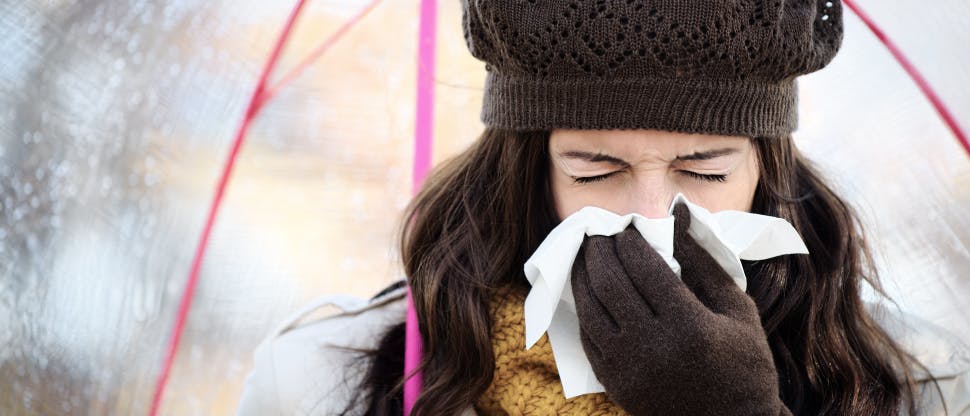The Flu: Causes

Transmission of the Flu
Influenza virus particles are spread from person to person within tiny droplets formed when coughing, sneezing, or talking.4-6
These infected droplets are then transmitted to another person who either:5,6
- Breathes in the airborne droplets
- Comes into close contact with an infected person
- Touches a contaminated surface and then touches their mouth, nose, or eyes
Anyone can get the flu, but it can be more serious in certain groups of people:1
- People aged 65 and over
- Pregnant women
- People with serious medical conditions such as diabetes, HIV, chronic respiratory, cardiac or cancer conditions
- Babies/young children

How does climate change affect the spread of influenza?
There is a growing amount of work investigating the links between climate change and respiratory diseases such as influenza, helping to ensure medical and public health experts are prepared for any future challenges.11
Viral respiratory tract infections are the most common human illness, with approximately 17bn incidences recorded in 2019.11
Studies have shown what most health professionals may understand well: with lower temperatures, the likelihood of influenza rises.11,12 A similar association was seen with humidity, where a lower absolute humidity also led to a rise in influenza.12
Warmer winters were also found to be linked to more severe epidemics of influenza A and B the following year.11 And in tropical climates, increased temperatures were associated with higher rates of respiratory infections.11
Multiple studies have also shown that when extreme precipitation (snow, rain, hail) events occur, influenza cases often rise shortly afterwards.13-18
Being aware of the climate or weather changes that are occurring, as well as their severity, could help you plan for a potential rise in patients seeking flu medications.
Theraflu – the Power to Feel Better

The Panadol C&F range
Find out how the Panadol C&F range can help your patients get rid of the flu.






